How to Prepare Your House for a Hurricane in 2024

The hurricane season starts only in June, but preparation should start today. When the gusts of the hurricane season start to blow, and the first storm hits, it might be too late to act. Many people in Florida know this well because hurricanes are a regular part of their lives, but as many as 19 US States have been hit since records began in 1851.
Imagine the peace of mind of knowing that your home, from the garage door to the window frames, is fortified against those violent winds. Picture you and your family members safely sheltered as the storm rages outside.
This guide could be your blueprint for preparing effectively. From securing trees around your property, protecting your car, or ensuring your home is a safe shelter, you’ll find practical, actionable steps to minimize wind and flood damage and safeguard what matters most.
Before hurricane watch begins, start transforming your home into a fortress of security. Follow these steps to ensure that when the hurricane hits, you and your family are prepared to deal with it seamlessly.
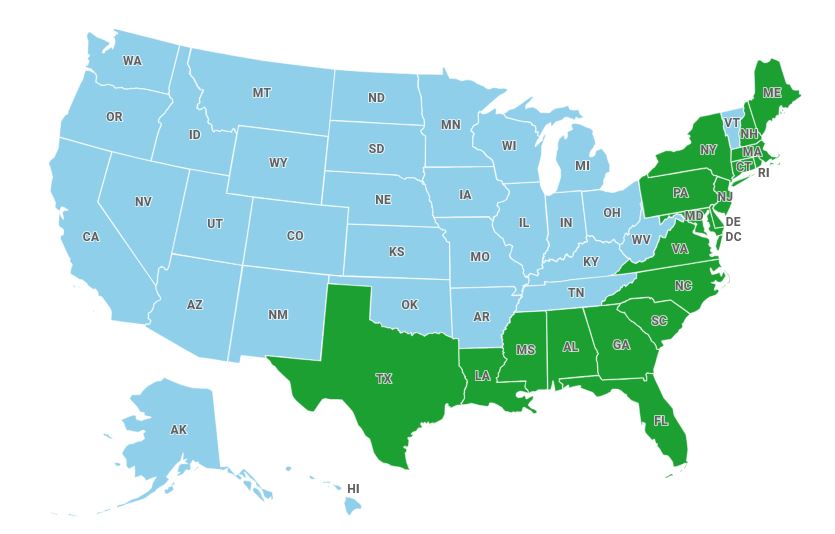
What is House Hurricane Preparation?
House hurricane preparation is the process of making your house resilient against the devastating impact of hurricanes. It involves a series of actions and modifications to protect against high winds, heavy rain, and potential flooding associated with these powerful storms.
The preparation process begins with a detailed assessment of your home’s vulnerability to various hurricane-related threats. This includes evaluating the strength and stability of the roof, windows, doors, and other structural elements. Ensuring that your home meets or exceeds local building codes is a key part of this assessment, as these codes are often designed with hurricane safety in mind.
Remember in 2018 when that house in Mexico Beach, Florida, was left virtually unscathed by the Category 5 Hurricane Michael amidst widespread devastation? It was built to be hurricane-resistant, adhering to and even exceeding building codes, with reinforced concrete construction, storm-proof windows and elevated design.
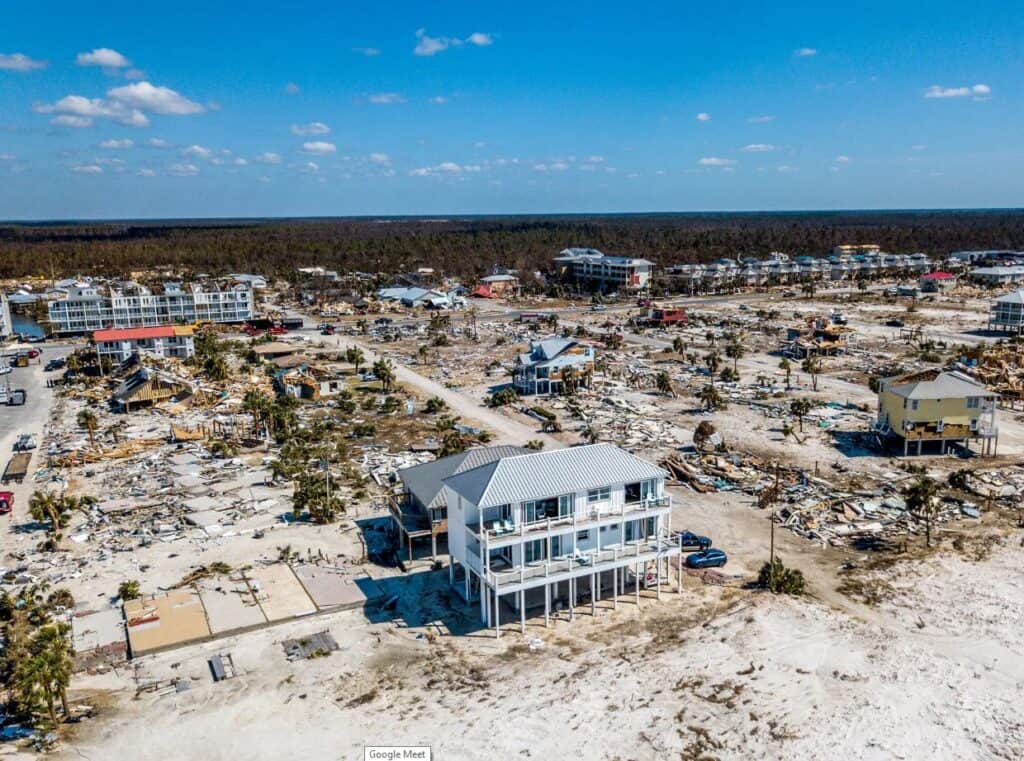
Reasons You Need to Know How to Prepare for Hurricane Season
Safety for Your Family: Ensuring your family’s protection is arguably the most important aspect of preparing for hurricane season. I am a proud father of two and husband of one, and I have no greater motivation than to visualize their well-being during the storm. This means creating a secure environment where risks of injury or worse are minimized. It involves not only taking cover from the elements but also preparing for the potential need to evacuate, having a communication plan in place, and ensuring that every family member knows what to do in different scenarios.
Protection of Your Property: Adequate preparation can prevent significant hurricane damage, such as a structural roof collapse and broken windows. By reinforcing the structural integrity of your home and securing potential weak points, you can greatly reduce the risk of extensive property damage. This includes tasks like adding storm shutters, securing outdoor items that could become projectiles, and ensuring your home’s foundation and roofing are up to withstand the storm’s impact.
Financial Security: Comprehensive preparation can help avoid costly insurance claims due to hurricane-related damage. By taking proactive measures, you can prevent damages that might not be covered by insurance or could lead to increased premiums. Additionally, being well-prepared can expedite the claim process if damage does occur, as you’ll have taken all reasonable steps to mitigate risk. If you don’t have any insurance, the potential financial burden of repairs and replacements would fall entirely on you.
Peace of Mind: Knowing you’re well-prepared can significantly reduce stress when a hurricane warning is issued. The confidence that comes from having a solid plan and knowing you’ve done everything possible to protect your home and family can be priceless. This peace of mind allows you not only to sleep better, but to focus on other important aspects during a hurricane, such as staying informed and making critical decisions with clarity.

Step-by-Step Instructions to Fortify Your Home Against Hurricane Force Winds Before the Storm Hits
Preparing your house for a hurricane involves several crucial steps:
Check Structural Elements
The roof is one of the most vulnerable parts of your home during a hurricane. Ensuring its integrity and strength can prevent significant damage.
Inspect it for any signs of wear or damage. Replace loose or missing shingles or tiles. Consider installing hurricane straps or clips that help secure the roof to the walls, providing added stability. Ensure that soffits are properly fastened and sealed.
Check the foundation for cracks or weaknesses and repair them. Reinforce walls, especially if your home is older, with additional support like bracing or sheathing.
For homes in flood-prone areas, consider retrofitting with flood-resistant materials and techniques. If building from scratch, seriously consider an elevated design with pilings to enhance surge protection.
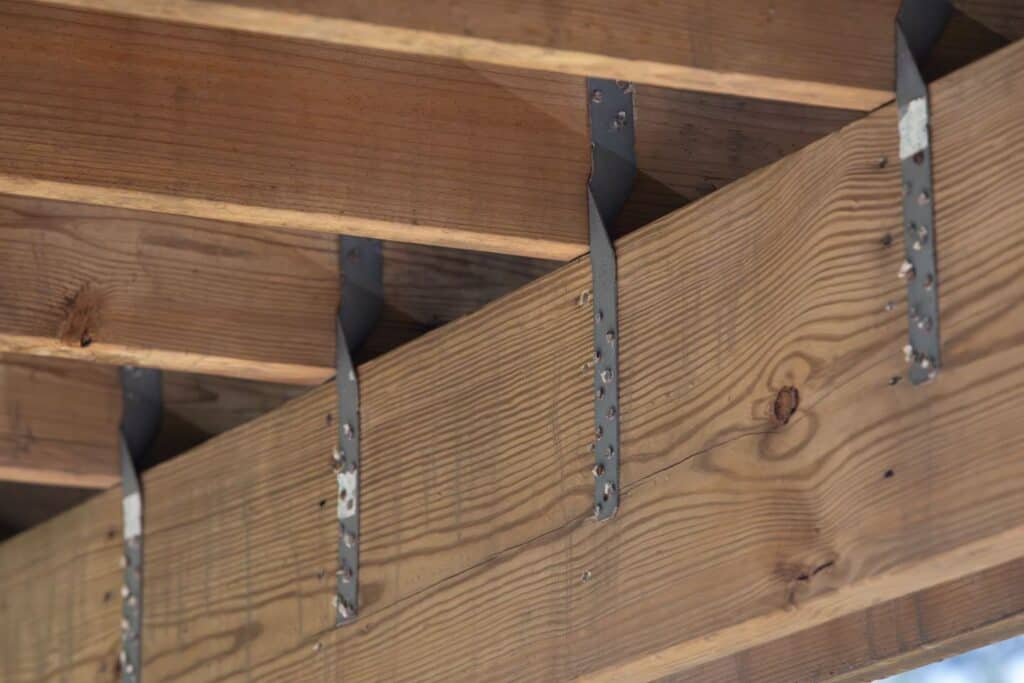
Install Storm Shutters
Installing storm shutters is one of the most effective ways to protect your windows and doors from hurricane-force winds. These shutters prevent shattered glass and protect against wind pressure, keeping your family safe from debris.
Choose shutters that meet local building codes for wind resistance. Options include roll-down shutters, accordion shutters, or storm panels. Ensure they are properly installed and can be easily closed when a hurricane warning is issued.
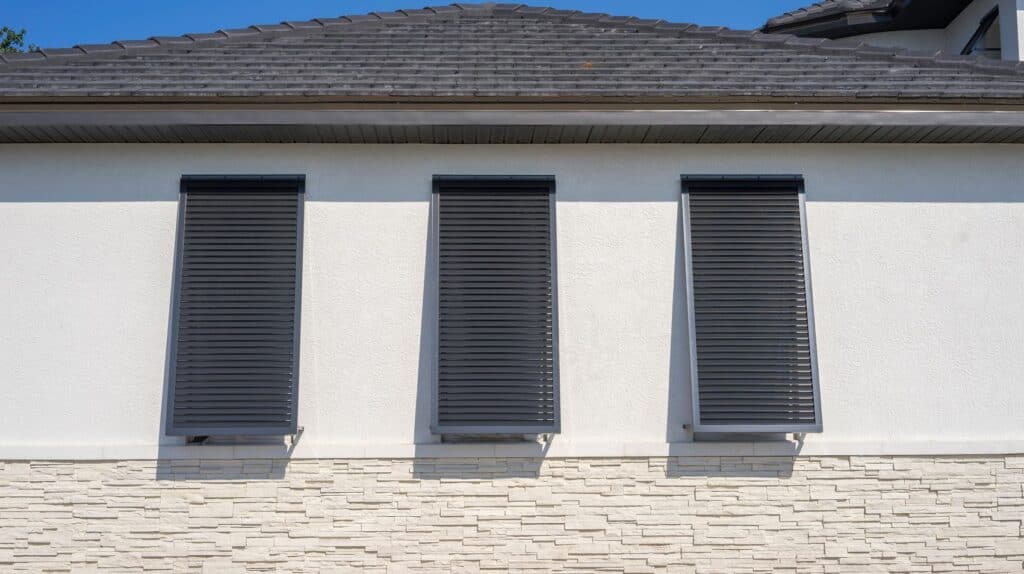
Reinforce Garage Doors
Garage doors are often the weakest structural point in a home. If a garage door fails during a hurricane, it can lead to increased wind pressure inside the home, potentially causing the collapse of your roof or other structural damage.
Install a bracing kit, use reinforced materials, or replace an old door with a wind-rated one. Regularly inspect the door’s hinges, springs, and tracks for wear and tear.
Waterproof Your Home
This is important to prevent water damage from heavy rains and potential flooding.
Apply sealants around windows and doors, ensure your basement or crawl spaces are waterproof, and check for any cracks in the foundation that need to be sealed.
Trim Tree Branches
Loose or weak branches can become dangerous projectiles during strong winds, posing a hazard to your home and safety.
Regularly inspect the trees around your property. Trim or cut weak branches that hang over your house, and remove dead or weak limbs. Consider hiring a professional arborist for large trees or those near power lines.

Secure Loose Items
Items left outside, like patio furniture, gardening tools, and toys, can be picked up by high winds and thrown against your house, causing damage.
Store outdoor items in a garage or shed. If they can’t be brought inside, securely anchor them to the ground or a sturdy structure.
Home Inventory
Have a record of your belongings in case you need to file an insurance claim after the storm.
Document your home’s contents with photos or videos, listing important items and their values. Store this information in a safe place, such as a waterproof container or digitally in the cloud.

Prepare an Emergency Kit
Having an emergency supply kit is crucial. It ensures you have the necessary supplies to sustain your family, especially if evacuation is needed or if services are disrupted.
Your hurricane emergency kit should include emergency supplies like water (one gallon per person per day for several days), non-perishable food, a flashlight, a battery-powered or hand-crank radio, extra batteries, a first-aid kit, medications, personal hygiene items, copies of important documents, cash, and chargers for electronic devices.
Don’t forget about special needs like baby supplies, elderly items, pet food, and any specific medical requirements.
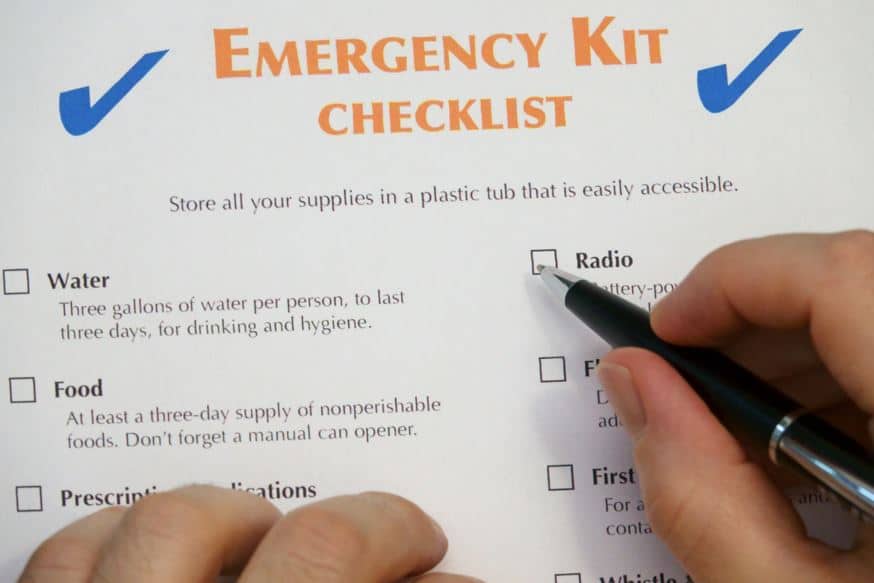
Key Considerations For Successfully Weathering a Hurricane
Stay Informed: Keep up with hurricane watches and warnings through reliable authorities like the National Hurricane Center, FEMA, and Local and State Emergency Management Agencies, and News Outlets.
Review Your Insurance Policy: Ensure your insurance coverage includes hurricane damage and become aware of the waiting period and the paperwork needed to file an insurance claim.
Plan for Evacuation: Have an evacuation plan in place, including a route and a packed kit with important documents and supplies.
Enhancing Your Home’s Hurricane Resilience
Upgrade Windows and Doors: Consider fitting storm shutters on all windows and doors, including sliding glass doors, and ensure they have at least three hinges for added strength.
Strengthen Your Roof: Secure loose tiles and ensure your roof can withstand wind pressure to prevent water damage and structural collapse.
Alternatives to Traditional Hurricane Preparation
Temporary Relocation: For those in mobile homes or high-risk areas, consider relocating to a more secure location during hurricanes.
Professional Assistance: Seek additional advice from experts on how to prepare your house for a hurricane, especially regarding building codes and additional coverage options.
Wrapping Up and My Experience With Hurricane Preparation
Hurricanes can be both fascinating and terrifying. Their force can be absolutely devastating and create massive destruction wherever it passes by.
Most of these measures (the applicable ones) are implemented in my house, which is something that has given me the necessary peace of mind and the confidence that my family would be safe if confronted with such a powerful natural disaster.
I hope this article has helped you learn the main steps you should consider to prepare for a hurricane.
Stay safe, stay prepared, and face the next hurricane season with confidence.
Take a look at my other posts, and reach out if you feel like it.
FAQ – Frequently Asked Questions
How do I prepare windows and doors for a hurricane?
Windows should be protected with storm shutters. Replace old garage doors, since these are a particularly serious Achilles’ heel of your house when facing strong winds. The remaining doors should be hurricane-proof and have three hinges and a deadbolt lock that is at least one inch long. Sliding glass doors are particularly vulnerable and should not only be made of tempered glass but also covered with shutters during the storm.
What should I avoid doing during a hurricane?
Avoid disregarding warnings or evacuation orders, going outside, opening doors or windows – or standing close to them – leaving your pets behind, lighting candles or gas-lit lanterns. And don’t forget to have an updated emergency kit.
What is the cheapest way to protect windows from hurricanes?
Plywood can be used instead of storm shutters for a similar effect. Just bolt or nail them to your window frames, and get ready to stay in the dark.
How do I hurricane-proof a front door?
Add heavy-duty deadbolts and strong locks. Secure the door frame with reinforced metal plates.






